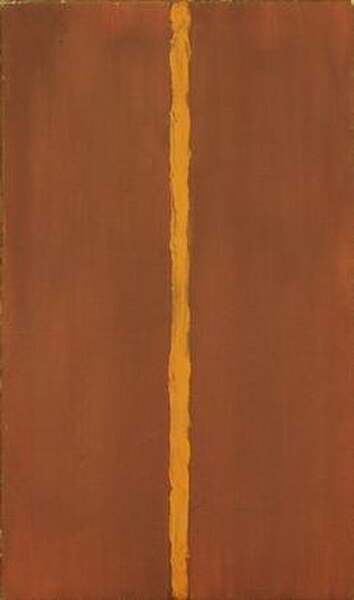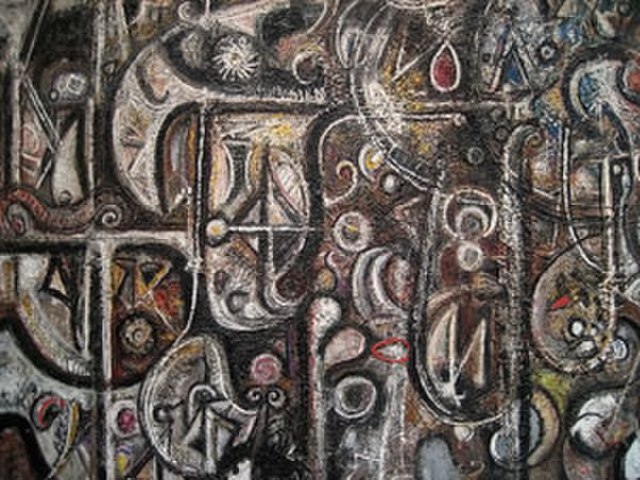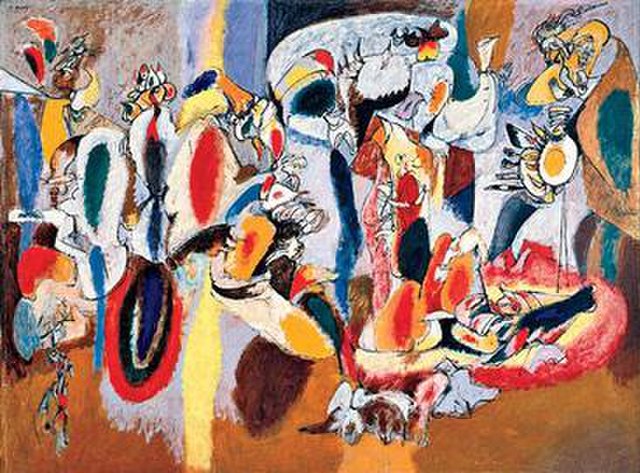Francis Russell "Frank" O'Hara was an American writer, poet, and art critic. A curator at the Museum of Modern Art, O'Hara became prominent in New York City's art world. O'Hara is regarded as a leading figure in the New York School, an informal group of artists, writers, and musicians who drew inspiration from jazz, surrealism, abstract expressionism, action painting, and contemporary avant-garde art movements.
Frank O'Hara
Historic Plaque at 441 East 9th Street where Frank O'Hara lived unveiled by Greenwich Village Society for Historic Preservation on June 10, 2014
Abstract expressionism in the United States emerged as a distinct art movement in the immediate aftermath of World War II and gained mainstream acceptance in the 1950s, a shift from the American social realism of the 1930s influenced by the Great Depression and Mexican muralists. The term was first applied to American art in 1946 by the art critic Robert Coates. Key figures in the New York School, which was the epicenter of this movement, included such artists as Arshile Gorky, Jackson Pollock, Franz Kline, Mark Rothko, Norman Lewis, Willem de Kooning, Adolph Gottlieb, Clyfford Still, Robert Motherwell and Theodoros Stamos among others.
David Smith, Cubi VI (1963), Israel Museum, Jerusalem. David Smith was one of the most influential American sculptors of the 20th century.
Barnett Newman, Onement 1, 1948. During the 1940s Barnett Newman wrote several articles about the new American painting.
Richard Pousette-Dart, Symphony No. 1, The Transcendental, 1941–42
Arshile Gorky, The Liver is the Cock's Comb (1944), oil on canvas, 731⁄4 × 98" (186 × 249 cm) Albright–Knox Art Gallery, Buffalo, New York. Gorky was an Armenian-born American painter who had a seminal influence on abstract expressionism. De Kooning said: "I met a lot of artists — but then I met Gorky... He had an extraordinary gift for hitting the nail on the head; remarkable. So I immediately attached myself to him and we became very good friends."






